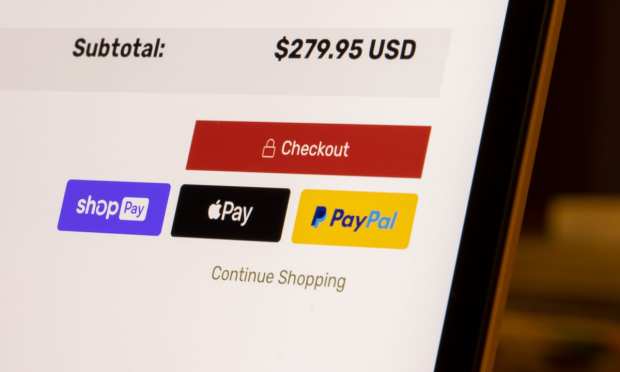‘NASCAR’ Checkout Pages Are Back – And Merchants May Not Mind

Cryptocurrency is good for many things — trading, investing, speculating, paying for cybercrime — but as a means of payment for transactions, it leaves a lot to be desired for enthusiasts. It’s not as easy to spend crypto as it is to spend actual currency — something one might assume isn’t much of a concern for bitcoin holders and other crypto collectors primarily interested in trading digital funds for profit. But that assumption, per PYMNTS data released last week, would, in fact, be wrong.
According to the new Cryptocurrency Payments Report: How Consumers Want to Use It to Shop and Pay, there is fairly solid interest in spending cryptocurrency. Fifty-seven percent of former or current crypto holders made at least one purchase with those digital tokens last year, while 59 percent of consumers who have never owned crypto would be interested in using it to make purchases in the future. Moreover, the data demonstrated, as many as 46 million consumers — about 18 percent of the total population — would consider using crypto in a retail setting, regardless of whether they currently own the digital offerings.
The interest in using crypto as a currency to transact with is clearly growing — but actual opportunities to tap crypto reserves to pay can be hard to find. But as of last week, it will get a bit easier. Global payment gateway Citcon announced that in partnership with Flexa, it is offering the option to accept cryptocurrency payments such as bitcoin (BTC), Ethereum (ETH), Litecoin (LTC) and Dogecoin (DOGE). The deal, Citcon CEO Chuck Huang told Karen Webster, is designed to allow consumers to use digital currency payments with virtually no overhead and at the lowest cost, while enabling merchants to receive settlement in U.S. dollars or the digital currency of their choice.
“Enabling the consumer to actually use the crypto to buy something either in-store or online was always the original vision for crypto,” Huang noted.
The new partnership will start out in the United States, but the eventual goal is to enable crypto payments worldwide. The conversion from crypto back to fiat to pay the merchant will be done by Flexa, as will the consumer KYC (know your customer). Citcon will serve as the payments gateway, authenticating and opening up access to the 6,000 or so merchants for whom they enable payments, Huang noted.
This latest announcement is one of a series of leaps forward for the Citcon gateways. Just a few weeks ago, Citcon captured headlines for adding 100 new payment methods to its platform, mostly serving consumers in LATAM and Asia Pacific.
Via its gateway, Citcon now enables consumers in the U.S. and around the world to truly pay as they want — whether that is credit and debit cards; voucher payments; buy now, pay later (BNPL); eWallets; bank transfers; or crypto. As Huang noted, the payments space has become incredibly dynamic in the last several years, with new ideas, innovations and improvements constantly on the radar.
As Webster observed, the scenario could trigger some flashbacks to the early days of mobile wallet technology, when it seemed like everyone who was anyone in the industry was rolling out a mobile wallet offering that was plastered all over the checkout of every website. The intention was to offer choice — but the visual effect, she noted, was rather akin to a NASCAR vehicle plastered end-to-end with advertisements.
Those generation-one wallets have largely gone away, and with them went overly saturated checkout pages. But now, with the rise of BNPL, crypto and national mobile wallets, checkout pages are again starting to fill up.
But the 2.0 version, Huang noted, is a bit different in nature. “I think at this time, there are different payment options that breed different value propositions and attract different customers,” he explained. “In the past, though, with Google Pay or Visa, the value at checkout is the same as a credit card, with the same source of funding.”
With today’s expansion of options, different payments bring different value propositions to consumers, issuing from separate funding sources and capable of delivering different value — and potentially bigger basket sizes for merchants.
Moreover, said Huang, the technological infrastructure of the checkout page is improving. Using an IP address to determine where the consumer is located can do a lot to streamline the visible options, he noted. A consumer checking out in China, for example, will likely see Alipay and WeChat Pay as options, while a U.S.-based customer could see Apple Pay or PayPal.
The point isn’t to drown consumers in options they don’t want and can’t use, said Huang. Instead, the goal is to enable transactions for more consumers worldwide by making it possible for them to access the payment methods they want and feel comfortable with, without hitting a lot of friction along the way.
